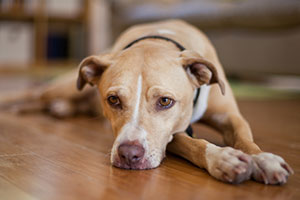
A Pawsitive Guide: How to Deal with Pet Separation Anxiety When You're Away
Separation anxiety in pets is a prevalent issue that primarily affects dogs but can afflict other animals as well. When left alone, these pets may exhibit symptoms ranging from mild unease to extreme distress. Addressing this condition effectively can significantly improve the lives of pets and their human companions. Here we delve into various strategies to help your pet handle separation anxiety when you're not around.
Understanding the Roots of Separation Anxiety
The initial step in managing separation anxiety is gaining a clear understanding of the condition. Pets develop this issue due to a multitude of factors like changes in their daily routine, environment, or household members. The symptoms vary from excessive vocalization, destructive behavior, escape attempts to signs of discomfort such as pacing or drooling excessively.
1. Cultivate a Secure and Soothing Atmosphere
Ensure that your pet has a safe, comforting haven where they can retreat when anxiety strikes. For dogs, this could be a crate; for cats, a cat tree or a special room could serve the purpose. Equip this space with their preferred toys, blankets, and other items that offer comfort. Familiar smells can help soothe your pet and instill a sense of security.
2. Gradual Desensitization and Counter-Conditioning
Gradual desensitization and counter-conditioning are among the most successful methods for treating separation anxiety. This process involves slowly acclimating your pet to solitude and helping them understand that your absence is not a cause for concern.
Start by leaving your pet alone for brief periods and gradually lengthen your time away. Simultaneously, counter-conditioning helps associate your absence with positive experiences such as a special treat or toy. This process can effectively change your pet's emotional reaction to solitude.
3. Adhere to a Regular Schedule
Consistency provides pets with a sense of security and predictability, which can significantly alleviate their anxiety. Maintaining a regular schedule for feeding, exercise, and playtime can offer this much-needed consistency.
4. Encourage Physical and Mental Activity
Exhausting your pet's energy reserves physically and mentally before you depart can help lessen their anxiety. Regular exercise can help dissipate surplus energy and induce relaxation. Mental stimulation via puzzle toys or training sessions can keep your pet's mind occupied and tired.
5. Use Familiar Smells
Pets possess a remarkable sense of smell and often link specific odors with comfort and safety. Leaving a piece of clothing that carries your scent can comfort your pet during your absence.
6. Explore Anxiety-Relief Products
There is many products available designed to help pets cope with anxiety. These range from pheromone diffusers, calming collars, anxiety wraps, and even calming diets or treats. Consult with your vet to identify the best options for your pet.
7. Seek Professional Assistance
If your pet's separation anxiety is severe, you might find it helpful to seek professional help. A certified animal behaviorist or a professional dog trainer can provide a tailored training program to alleviate your pet's anxiety. In some instances, your vet may recommend medication.
8. Keep Your Departures and Arrivals Calm
Creating a fuss when leaving or returning home can exacerbate your pet's anxiety. Instead, strive to make your departures and arrivals as calm and nonchalant as possible. This strategy can teach your pet that your comings and goings are typical daily events and not cause for alarm.
9. Consider Pet Daycare or a Pet Sitter
For pets who find it challenging to be alone, a pet daycare or pet sitter can provide companionship and help lessen their anxiety. This can be especially beneficial for any pet that require continuous human interaction.
10. Persistence is Vital
Remember that addressing separation anxiety requires time and persistence. It's normal for progress to be slow, so don't be disheartened. Every small step forward is progress.
In closing, separation anxiety in pets is a real and significant issue. It can be challenging to witness your pet in distress, but numerous strategies and resources can help. By understanding your pet's unique needs, offering them a secure environment, and gradually assisting them in becoming comfortable with being alone, you can greatly reduce their anxiety levels. Always feel free to seek professional help if you're uncertain about the next steps or if your pet's anxiety is severe. Your vet or a certified animal behaviorist can offer valuable guidance and support.
- Choosing a selection results in a full page refresh.












